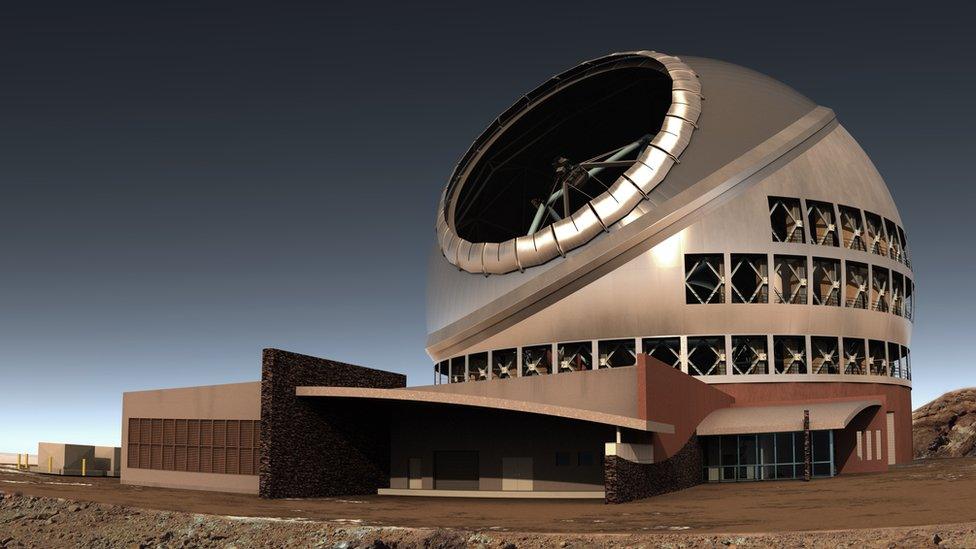Biggest telescope may switch location
- Published

Artist's impression: How the huge telescope might look when built
One of the world's biggest telescope projects might be forced to move its location.
The Thirty Meter Telescope (TMT) was due to be built in Hawaii, but ran into opposition with indigenous groups which consider its proposed site sacred.
Now the TMT's board says a site in the Canary Islands, Spain, could act as a potential alternative, external.
The $1.4bn project will enable experts to study the early Universe and peer into the atmospheres of exoplanets.
It is one of a raft of big observatories - along with the European Extremely Large Telescope (E-ELT) and space-based James Webb telescope - intended to serve astronomy into the 2020s and beyond.
Cloud-free Pacific skies, low atmospheric water vapour and other attributes make conditions at Mauna Kea, Hawaii, among the best in the world for astronomy.
The site intended for the TMT was just below the the 4,207m summit of the dormant volcano.
Sacred site
Opposition to the construction of observatories atop Mauna Kea has existed for decades. To many Native Hawaiians, Mauna Kea is considered the most sacred of all mountains on the island, with a special connection to their religion's deities.
So continued development is considered a desecration. But others who are against the project cite environmental and conservation concerns.
As construction was due to begin on the project in April 2015, protestors blocked access roads to keep crews off the site, resulting in several arrests. But opponents were also pursuing their complaint through the courts.

Protestors have blocked roads to the TMT site
In December 2015, the Hawaii State Supreme Court rescinded a 2011 construction permit, external for the next-generation telescope.
It reasoned that the permit had been issued before opponents got the chance to state their case.
"Quite simply, the board put the cart before the horse when it issued the permit," Chief Justice Mark Recktenwald said at the time.
This meant the TMT project would have to seek a new permit if it wanted to proceed with construction on Mauna Kea.
Back-up plan
Last week, the board of governors met to discuss progress on the TMT project in Hawaii and to consider potential alternative locations.
In a statement, Henry Yang, chair of the TMT international observatory board, commented:
"The TMT International Observatory (TIO) Board of Governors has explored a number of alternative sites for TMT. Every site we considered would enable TMT's core science programmes.
"After careful deliberation, the board of governors has identified Observatorio del Roque de los Muchachos (ORM) on La Palma in the Canary Islands, Spain, as the primary alternative to Hawaii."
The site in La Palma is already home to several telescopes. But Mauna Kea is higher and even more remote than La Palma, which, by some estimations, gives it the edge over the Canary Islands in terms of cloud-free skies, a consistent lack of atmospheric turbulence (which can inhibit observations), low water vapour and lack of light pollution.
However, this could be offset by convenience and cost of access as well as working conditions. Altitude sickness remains an issue at Mauna Kea, even though most observing is now done remotely - without astronomers having to physically visit the telescope.
A move from the Pacific to the Atlantic would result in major upheaval for the project, which has been in development for the past 15 years.
The TMT board said it would continue its efforts to gain approval for construction on Hawaii. But if those efforts continue to meet resistance, it's conceivable that astronomers will have to invoke their Plan B.
Follow Paul on Twitter., external